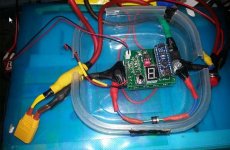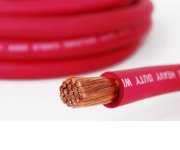I have the arduino version 2 and it works excellent, the newer version (ver 3) runs on a lipo pack, like the kweld (that was one of the differences). The version 3 also has a better more informative LED screen, the builder he is always upgrading the welder.
But to get performance out of them you need heavy thick probe cables (i'm using 6 gauge pure copper welding cables). Big heavy cables lets you get more amps to the tip of the probes at lower power settings. You can work nonstop. With the thinner cheap audio copper clad cables you have the crank up the power setting to get good results, high power settings and your cables will get hot, you can only do a few tabs before the cables get too hot to hold. Highly recommend pure copper especially if you got alot of cells to do. You can read some threads here in this forum about poor performance from tab welders, and its all due to the probe cables being too thin or not using pure copper.
I been using my welder with a 28ah agm battery and works excellent. The price of arduino welder is very good. On mine I have the power setting low, to get good welds using 0.15 nickel strip, and I have power to spare. Its not underpowered thats for sure. Even though it ships from germany I got mine in a week all the way to california.
I seen good reviews on the kweld too, but they both seem to work the same. As long as they can weld tabs, thats all that matters.
This is a picture of my arduino its not pretty but it does its job. On this one I have the older 8 gauge copper clad probe cables, they got very hot during use. Also version 2 only had a single LED, unlike the newer model. also the newer version runs off the 12 volt battery/lipo pack, this version I had to have a seperate power source to run the arduino. My improvement was instead of foot pedal I have a momentary switch on the actual probe that I use. I use xt90 connectors to connect to my 12 volt battery, its more convenient for me doesnt affect performance. No programming needed, just get it, connect the wires, and you can start to weld, just start at the lower settings until you get good welds, too high setting and you damage the thin nickel strip. I done 2x 80 cell lifepo4 battery packs so far with this welder and works as advertised.




